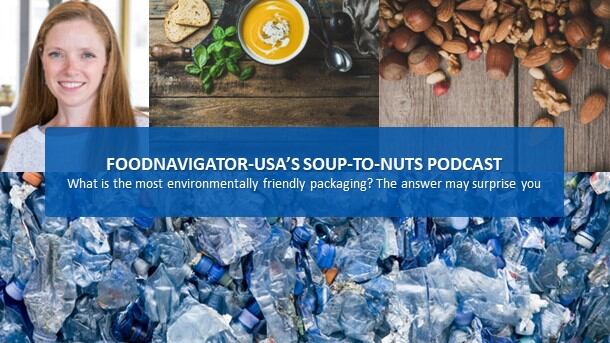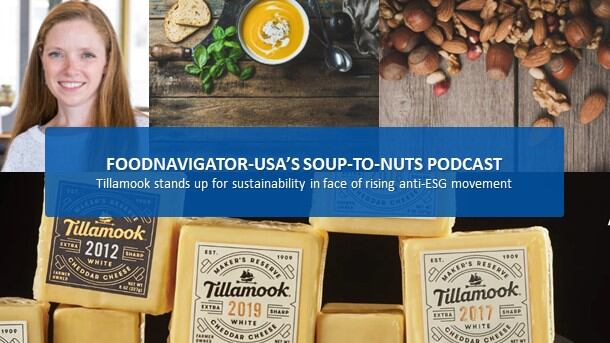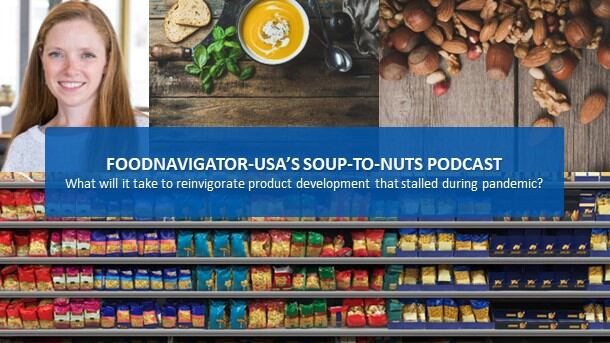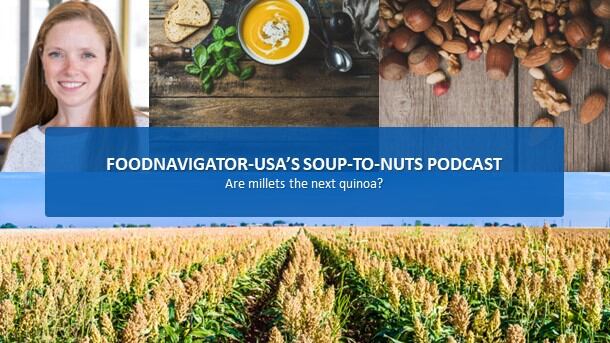But the most ecological material isn’t as clear cut as swapping paper board for plastic or reusable packaging for single use options. A package’s end of life must be balanced with its primary purpose to protect food and reduce waste, and competing consumer desires – such as to see what is inside of a package.
Likewise, EPR legislation that aims to reduce pollution by placing added onus on manufacturers to collect and manage used packaging can have unintended consequences unless policies are carefully worded.
In this episode of FoodNavigator-USA’s Soup-To-Nuts podcast, we hear from stakeholders across the value chain who were gathered in Washington, DC, last week to attend the Organic Confluences Summit, jointly hosted by the Organic Trade Association and the Organic Center. Camille Herrera, the sustainability program manager at Driscoll’s, shared in a presentation how the berry producer is creatively rethinking its use of and responsibility for the iconic clam shells that protect its product. Renaud de Rosier, director of sustainability at Amy’s Kitchen, also made a case for why recyclable packaging isn’t always the best solution. And others consider whether EPR is the salvation some make it out to be.
[Editor’s note: Never miss an episode of FoodNavigator-USA’s Soup-to-Nuts podcast – subscribe today.]
The current landscape
When it comes to food packaging, plastic is among the most prevalent materials used and one of the most demonized. But while it has its faults and its production might produce more greenhouse gasses than that of paperboard, it also has its benefits, which must be carefully balanced across its life cycle – something Herrera explained Driscoll’s is doing through its Sustainable Packaging Charter.
“What does it mean for packaging to be functional? What are we thinking about when we think about the functionality of the package? Well, first off, we think about the fruit that we’re packing – we’re packing berries. And second off, we think about our operating environment, and what are the conditions under which our fruit moves through the supply chain,” she said.
“When it comes to berries, they’re really delicate, they’re highly susceptible to damage,” and when you have damaged fruit, people won’t buy it, she added. Likewise, most people won’t buy fruit that they can’t see.
The clear clamshells Driscoll’s uses today addresses both of these needs, and it contains some of the highest percentages of recycled content of any food packaging resource, all of which reduces greenhouse gas emissions.
Just because clam shells have been the go-to for Dricoll’s doesn’t mean the company isn’t open to other alternatives. Herrera explains the second prong of the company’s Sustainable Packaging Charter is ‘replace,’ and this includes discovering and testing alternative packaging formats. Among the many options Driscoll’s has considered is paperboard with cutouts that allow consumers to see the fruit. But,has Herrera explains, it has fallen short of expectations so far – at least for fragile berries.
Even if paper board packaging is created in a way that adequately protects berries, it conflicts with other consumer desires – mainly the ability to see the fruit from all sides – which can lead to a drop in sales and increase in waste.
Driscoll’s clamshell to clamshell recycling initiative
While Driscoll’s continues to explore and innovate sustainable packaging options for the long term, Herrera explained that it also is taking short-term action under its Sustainable Packaging Charter by stepping up the recovery and rate of recycling for its current packaging through its clamshell to clamshell recycling initiative, which seeks to build a postconsumer recycled PET clamshell market through demand.
Herrera explained that after two years of pre-competitive research, Driscoll’s in 2020 required its suppliers to go from 0% postconsumer recycled content from recycled PET clamshells to 10% by the end of the year, which is successfully achieved. The next goal is to include 25% postconsumer clamshells in new clamshells by 2025.
And while the company is well on its way, Herrera explains there are forces it can control and those it can’t, and to succeed four elements must co-exist.
These include high recycling rates – so an engaged consumer population and reliable collection, a sorting system, a processing system to convert recycled material into feedstock for new material and “good policy,” or legislation that encourages consumers to recycle.
Recycling isn’t always the best solution
While boosting packaging recovery through recycling is an effective – and successful – option for Driscoll’s, it isn’t the best option for all packaged food, Amy’s Kitchen’s director of sustainability Renaud des Rosiers explained at the Organic Confluences Summit.
For example, he explained Amy’s Kitchen’s frozen meals are served on trays and in bowls that are mostly fiber-based but which need a thin film laminate to keep from collapsing when the food is reheated or presenting a food waste or safety problem to consumers. Because these materials are not easily separated, they are not suitable for recycling.
Likewise, consumers aren’t always willing to clean this type of packaging sufficiently before tossing them in the recycling bin – making them unusable and resulting in a low recovery rate of just 9%.
In response, Amy’s Kitchen is turning to plant-based compostable packaging for its trays, bowls and food wrappers. It also is investing in infrastructure so that more municipalities can manage industrial compost.
The switch to compostable may be out of reach for some companies because it often is more expensive to source and less efficient to run on existing machinery, cautioned Jason Cleaver, a business development executive at Columbia Basin Onion who also presented at the Organic Confluences Summit.
But he added all packaging has trade-offs. For example, he said, many retailers are pushing to switch from plastic to paper bags for produce, but paper isn’t as strong, so when it comes to items like potatoes the bags drop from standard 10-15 pounds to 5 pounds, which in turn impacts the price per unit for consumers.
Crafting impactful extended producer responsibility legislation
The push towards more sustainable packaging also comes at a time when some states are proposing and passing extended producer responsibility or product stewardship legislation that places a shared responsibility for end-of-life product management on producers and other entities in the supply chain, instead of the general public. The goal is to nudge packaged goods manufacturers to think more critically about what happens to their packaging after it leaves their warehouses.
But not all EPR legislation is equal, warned Matt Dillion, a consultant with Risk to Resilience Strategy. At the conference, he explained some as “watered down” and letting producers off the hook, while other provisions could have unintended consequences, such as potentially discouraging adoption of compostable or biodegradable materials because compliance obligations are overly restrictive or stringent.
As such, he encouraged stakeholders to pay close attention to proposed legislation, but not necessarily blindly support it. Rather, he advocated for working with others across the value chain for a solution that balances the needs of all players and is flexible enough to account for technological advancements in the future.




